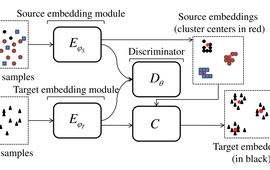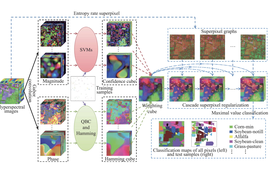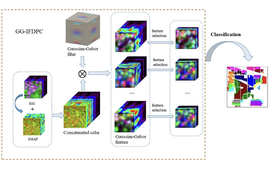Deep Metric Learning-Based Feature Embedding for Hyperspectral Image Classification
Learning from a limited number of labeled samples (pixels) remains a key challenge in the hyperspectral image (HSI) classification. To address this issue, we propose a deep metric learning-based feature embedding model, which can meet the tasks both for same-and cross-scene HSI classifications. In the first task, when only a few labeled samples are available, we employ ideas from metric learning based on deep embedding features and make a similarity learning between pairs of samples. In this case, the proposed model can.
Cascade superpixel regularized Gabor feature fusion for hyperspectral image classification
A 3-D Gabor wavelet provides an effective way to obtain the spectral-spatial-fused features for hyperspectral image, which has shown advantageous performance for material classification and recognition. In this paper, instead of separately employing the Gabor magnitude and phase features, which, respectively, reflect the intensity and variation of surface materials in local area, a cascade superpixel regularized Gabor feature fusion (CSRGFF) approach has been proposed. First, the Gabor filters with particular orientation.
3-D Gaussian-Gabor feature extraction and selection for hyperspectral imagery classification
Hyperspectral remote sensing imagery provides valuable and rich information to distinguish the characteristics of materials. However, this advantage of hyperspectral imagery often encounters the problem of a limited amount of training samples, which is caused by the difficulty of manually labeling. Fortunately, the spatial distribution of surface objects can be integrated with the spectral signature to improve the discriminative ability. In this paper, a 3-D Gaussian-Gabor feature extraction and selection framework has been proposed for hyperspectral image classification. First, a bank of 3-D Gaussian-Gabor filters are convolved with the concatenated data of both extended multi-attribute profile (EMAP) features and raw hyperspectral data. Second, an improved fast density peak clustering (IFDPC) method is introduced to select the most representative features from each extracted 3-D Gaussian-Gabor feature cube. Finally, the retained features are combined together to accomplish the classification task. The proposed method is thus named as GG-IFDPC. Three real hyperspectral imagery data sets have been utilized, and the experiments demonstrate the advantages of the proposed GG-IFDPC approach over the compared ones.


